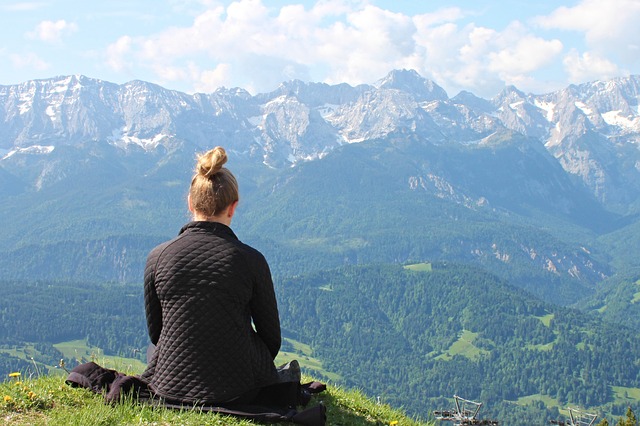Allyson Pimentel, a teacher at the Mindful Awareness Research Centre (MARC), provided a guided meditation podcast on the theme, From Separation to Connection, Silence to Speaking Truth, Stillness to Action. Allyson’s emphasis was on the power of meditation to increase our sense of connection, build our capacity to speak truthfully with courage and to take compassionate action. Her meditation focus was on developing groundedness and stability through breath and formed part of the weekly, mindfulness awareness podcasts provided by MARC, UCLA.
Allyson explained that we are all connected in so many ways. This sense of connection is heightened by the global pandemic and global social activity to redress injustice and inequality, epitomised by the Black Lives Matter movement. This movement against violence towards black people has reverberated around the world with protest marches in many countries to show solidarity with those fighting against injustice.
Sports teams are conducting public rituals to show solidarity and those who continue to promote hate and racism are being excluded from media forums that would otherwise give voice to their divisive comments. Allyson noted that division and violence on racial grounds derives from a distorted sense of “separateness”, not recognizing our underlying connection to all other humans. A focus on separateness can breed “superior conceit”, a need to demonstrate that someone is “better than” another person.
Allyson’s professional work is focused on bringing mindfulness to bear on mental health issues and treatment. She discussed mindfulness as paying attention to the present moment with kindness, curiosity and a sense of connection. She stressed that breath meditation can help us to develop a strong sense of stability, self-compassion and compassion towards others. She encouraged people participating in her presentation on Zoom to focus on one other individual participating in the global mindfulness awareness meditation and notice their face, their name, and their “place” and wish them protection, safety from harm, wellness and ease. This process can deepen our sense of connection.
A breath meditation
During her Zoom drop-in session, Allyson offered a 20 minute breath meditation. Her process involved a strong focus on our in-breath and out-breath and the space in between. Allyson began the meditation by having all participants take a deep in-breath and let out an elongated out-breath while picturing their connection with others in the session doing the same thing – to create a sense of connection by breathing “as one”. She suggested that people view the in-breath as self-compassion and the out-breath as compassion towards others, alternating between receiving and giving.
After this initial exercise during the guided meditation, Allyson encouraged participants to focus on their bodily sensations to become grounded fully in the moment – sensing their feet on the floor or ground and feeling the pressure of their body against their chair. She suggested that if mental or emotional distractions intervened, returning to our bodily sensations is a way to refocus back on the breath. A way to regain focus is to feel the breath moving the body (e.g. the in and out sensation of the diaphragm) and to feel the breath moving through the body – while recognising that many people around the world are experiencing constricted breathing through illness and/or inequity.
Allyson maintains that breath meditation and entering into silence fortifies us, provides stability and groundedness and enables us “to act for the good of others and to speak truth from our power”. She suggests that meditation practice builds the personal resources to “speak wisely, truly and compassionately” in the face of unconscionable inequity.
Reflection
During the meditation session, Allyson quoted the One Breath poem written by Mark Arthur – a very moving reflection on connectedness and “collective social suffering”. Mark exhorts us not to turn away but to turn towards the “deep, deep wound” as a way to express self-compassion. Then with loving kindness, “speak and act from the heart” with awareness that there is no separation between them and us, only connection through birth, breathing, living and death.
The space that lies between our in-breath and out-breath can be a place of rest and tranquillity and a source of spaciousness. As we grow in mindfulness through breath meditation and exploring our connectedness to all human beings, we can access this spaciousness and learn to extend our thoughts and actions compassionately towards others.
______________________________________
Image by John Hain from Pixabay
By Ron Passfield – Copyright (Creative Commons license, Attribution–Non Commercial–No Derivatives)
Disclosure: If you purchase a product through this site, I may earn a commission which will help to pay for the site, the associated Meetup group and the resources to support the blog.


